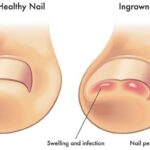A Functional Capacity Assessment (FCA) in the National Disability Insurance Scheme (NDIS) is an evaluation that assesses an individual’s ability to carry out everyday activities across various domains of life, considering their primary disability. This assessment is crucial in helping the NDIS determine the participant’s support needs, goals, and the types of funding that may be appropriate to enable a more independent and fulfilling life.

Key Areas Covered in an Functional Capacity Assessment:
The Occupational Therapist (OT) will review the below domains using subjective and objective testing and questioning;
- Physical Abilities
Examines the participant’s mobility, strength, endurance, and coordination, identifying areas where they may require support or adaptive aids. - Communication
Evaluates both expressive and receptive language skills, considering any support needed for clear and effective communication. - Social and Community Engagement
Assesses the participant’s ability to interact in social settings, develop relationships, and engage in community activities. - Cognitive Skills
Reviews memory, problem-solving, and decision-making abilities, focusing on how these affect daily tasks and overall independence. - Self-Care and Personal Tasks
Looks at personal care tasks (e.g., dressing, bathing, and eating) to determine the level of assistance required for the participant to maintain personal hygiene and health. - Domestic Skills and Living Arrangements
Examines skills related to cooking, cleaning, shopping, and home management, as well as suitability of current living arrangements. - Work and Education Abilities
Assesses capacity for employment or learning, including any support needs in job skills, task management, and workplace or educational accommodations.
The findings and then compiled into a comprehensive report and submitted to inform the participant’s NDIS plan, ensuring that the supports and services provided align with their unique needs and personal goals.
Purpose in the NDIS Framework
The Functional Capacity Assessment provides the NDIS with a comprehensive picture of the participant’s functional abilities,
which helps in:
- Planning and Funding: Determining the level and types of supports needed.
- Goal Setting: Supporting participants to set realistic and achievable goals for improved independence and quality of life.
- Progress Monitoring: Serving as a baseline for evaluating improvements or changes in the participant’s functional abilities over time.
Why Choose Plena Healthcare?
- Personalised Care
We take the time to review each clinical case independently to ensure that our services are tailored precisely to meet your needs. - Efficient Turnaround
Enjoy a swift process with Plena Healthcare; experience wait times in weeks, not months! - Quality Assurance
Senior clinicians conduct thorough reviews of each case before submission, ensuring quality outcomes and high standards of care. - Comprehensive Support Services
We offer a full range of services, including Functional Capacity Assessments, Manual Handling assessments, and tailored training, all designed to meet diverse participant needs. - Experienced Professionals
Our team consists of highly trained and experienced clinicians who specialise in delivering client-centred and outcome-focused support. - Commitment to NDIS Standards
We are committed to aligning with the NDIS’s best practices, ensuring that our services are accessible, reliable, and results-driven for all participants.
Plena Healthcare is dedicated to providing the support, responsiveness, and expertise you need to achieve positive outcomes and a seamless experience.
Our Scope of Services
Plena Healthcare offers services to complete Functional Capacity Assessments (FCAs) as well as Manual Handling assessments and plans. We also provide both individual and group-based Manual Handling training sessions for individual participants and providers in a wide range of settings such as within the community and various housing environments.
For Functional Capacity Assessments we will review each referral carefully to ensure it aligns with our service capabilities. Specific factors, such as participants under 40 years of age, bariatric needs, initial FCA requests, individual goals, or a primary diagnosis of a psychosocial disability, may require further consideration or additional information from referrers to confirm suitability.
Please submit your referral using our referral form and send it to Plena Community at Community@plenahealthcare.com.au. Our friendly team will review your referral and our clinical team will ensure your request matches our scope and be in touch with you for next steps.
To learn more about Plena’s Occupational Therapy services, visit our Occupational Therapy page.


